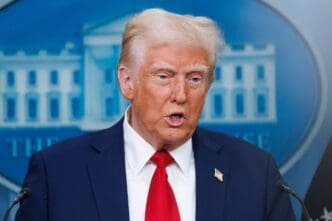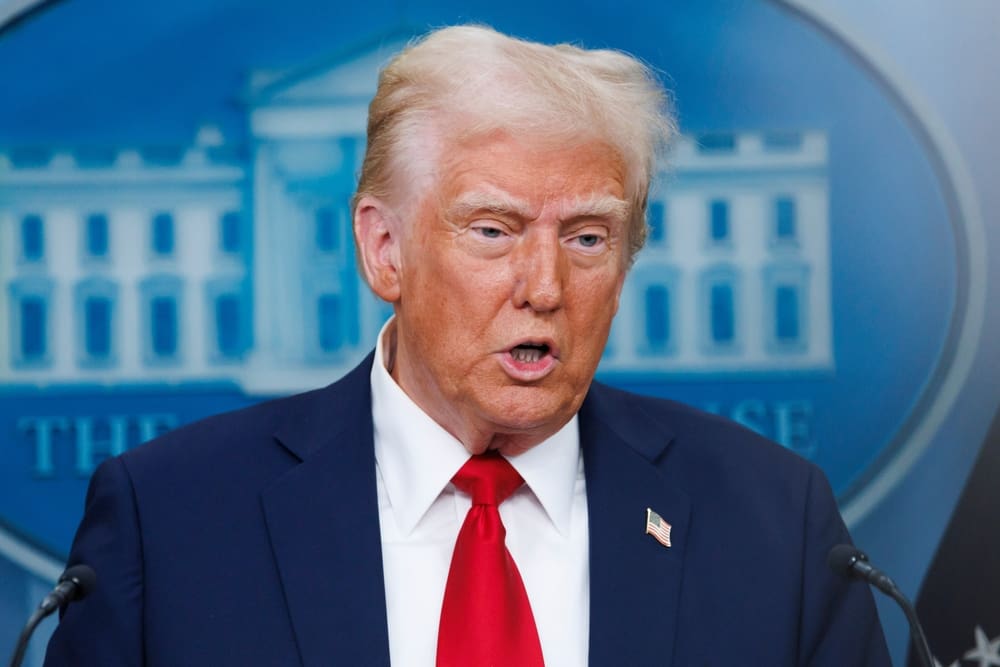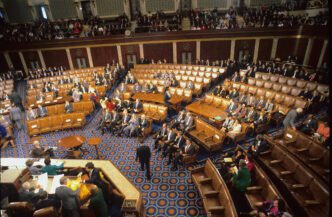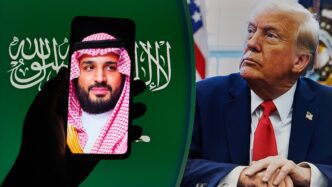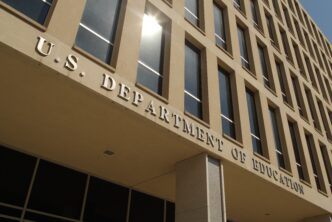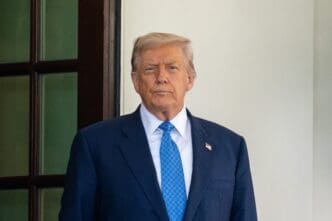KEY POINTS
- President Donald Trump declared a public safety emergency in Washington D.C., ordering the deployment of 800 National Guard troops and placing the city’s police force under federal control.
- D.C. Mayor Muriel Bowser fiercely rejected the president’s justification, citing official statistics that show crime is at a 30-year low and accusing the administration of a politically motivated power grab that undermines the city’s home rule.
- The president’s authority for this action comes from a rarely invoked provision of the D.C. Home Rule Act, but the move is legally complex and is expected to face a constitutional clash with local government over who has control of the police force.
President Donald Trump has declared a public safety emergency in Washington D.C., ordering the deployment of 800 National Guard troops and taking federal control of the city’s police force in a dramatic move he says is necessary to combat “complete and total lawlessness.” The unprecedented action, announced Monday at the White House, immediately sparked a constitutional clash with the city’s local government. Mayor Muriel Bowser fiercely rejected the president’s justification, presenting data that shows a significant drop in crime and accusing the administration of a politically motivated power grab that undermines the capital’s home rule.
In a press conference, President Trump stated he was launching a “historic action to rescue our nation’s capital from crime, bloodshed, bedlam and squalor.” He described the situation in Washington D.C. in stark terms, claiming the city had been “taken over by violent gangs and bloodthirsty criminals” and was plagued by “drugged out maniacs and homeless people.” The president’s order places the city’s Metropolitan Police Department (MPD) under the authority of U.S. Attorney General Pam Bondi for the duration of the emergency.
The deployment will see 800 National Guard members activated to support hundreds of federal law enforcement officers already positioned in the city over the weekend. According to the military, between 100 and 200 of these troops will be actively supporting law enforcement operations at any given time. Defense Secretary Pete Hegseth confirmed the Guardsmen would arrive by the end of the week, stating they “will be strong, they will be tough.”
Understanding the DC Home Rule Act
President Trump’s authority for this action stems from a specific and rarely invoked provision within the District of Columbia Home Rule Act. This federal law, passed in 1973 during the Nixon administration, was designed to grant Washington D.C.’s residents a degree of self-governance, including the ability to elect their own mayor and city council for the first time in a century. However, because D.C. is a federal district and not a state, Congress retained ultimate authority over its laws and budget.
Crucially, the Act contains a clause that allows the president to assume control over the MPD if “special conditions of an emergency nature exist.” This provision is a remnant of the pre-Home Rule era when the president directly oversaw the city’s operations. Legal experts note that the definition of “emergency nature” is not explicitly detailed, leaving it open to presidential interpretation.
Limits on Presidential Power
While the act grants this significant power, it is not without limitations. The president is required to provide written notice to Congress if the federal takeover of the police force is intended to last longer than 48 hours. Even with such notice, the federal control is statutorily capped at 30 days, after which authority would revert to the city unless further action is taken by Congress.
Mayor Bowser has argued that no such emergency conditions exist, calling the president’s order “unsettling and unprecedented.” Speaking to reporters, she asserted that the administration’s view of the city was distorted and that her government was effectively managing public safety. The move represents one of the most significant challenges to D.C.’s home rule in decades.
A Tale of Two Narratives: The Data on DC Crime
At the heart of the conflict are two vastly different portrayals of public safety in the nation’s capital. President Trump’s administration points to a recent attack on an employee of the Department of Government Efficiency (Doge), who the president said was “savagely beaten,” as a key example of a city out of control. He also referenced other incidents involving federal employees as evidence of a “threat to America.”
However, Mayor Bowser and the city’s own data paint a different picture. While she acknowledged a “terrible” spike in crime during 2023, which was consistent with trends in other major U.S. cities post-pandemic, she emphasized that the situation has since improved dramatically. According to the MPD’s public statistics, homicides have fallen by 32% between 2023 and 2024, and have dropped an additional 12% this year. Overall violent crime in the city is currently at a 30-year low.
“We are not experiencing a crime spike,” Mayor Bowser stated firmly. She said her administration “worked quickly to put laws in place that got violent offenders off our streets,” and the “huge decrease in crime” is a direct result of those local efforts.
The Human Element: Homelessness and Public Protests
Beyond crime, President Trump also focused heavily on the issue of homelessness, vowing to clear encampments he referred to as “slums.” He stated that homeless individuals would be relocated but did not provide specifics on where they would be sent. “Everything should be perfect,” President Trump said, arguing that the state of the capital reflects on the entire nation in the eyes of visiting dignitaries.
Local advocacy groups challenged this characterization, noting that the city has made measurable progress. Ralph Boyd, the chief executive of So Others Might Eat (SOME), a non-profit providing services to the homeless, told reporters that individual homelessness in D.C. has decreased by nearly 20% over the last five years. He warned that simply displacing people “will do is transfer the problem somewhere else into communities that are perhaps less equipped to deal with it.”
The president’s actions prompted an immediate public backlash, with protesters gathering outside the White House chanting “hands off DC” and “protect home rule.” The demonstration highlighted the deep-seated concerns among residents that the federal intervention is less about safety and more about political control over a city with a staunchly Democratic leadership.
This action marks a significant escalation in the long-simmering tensions between President Trump and the leadership of Washington D.C. By invoking federal emergency powers, the administration has set the stage for a legal and political battle over the fundamental right of the city to govern itself, a conflict that will be watched closely across the country.

